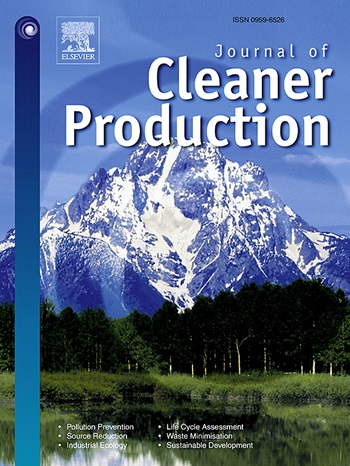Understanding cross-market strategic behaviors of prosumers: An equilibrium-driven evolutionary game approach
IF 9.7
1区 环境科学与生态学
Q1 ENGINEERING, ENVIRONMENTAL
引用次数: 0
Abstract
The rise of prosumers and the success of the sharing economy have catalyzed the development of energy sharing market (ESM), which is set to coexist with the conventional distribution energy market (DEM). However, the behaviors of prosumers within this evolving landscape remain underexplored due to the complex interactions among prosumers, ESM, and DEM. This paper presents a novel equilibrium-driven evolutionary game (EDEG) model that allows prosumers with bounded rationality to trade energy and choose participation in DEM, ESM, or both. Unlike previous studies, prosumers’ profits in this model are determined by the market-clearing equilibria, which in turn influence their market selection. The prosumers’ bidding strategies make the market clearing a hard-solving generalized Nash game (GNG). To overcome this, we convert the GNG into an equivalent, more tractable optimization problem, and then incorporate the generalized Nash equilibrium (GNE) into the EDEG model. Building on this foundation, we derive a solution algorithm and establish sufficient convergence conditions for the model. Additionally, by analyzing the equilibria, the EDEG model sheds light on the prosumers’ market selection preferences, cross-market strategic behaviors, sharp price jumping in ESM, and the conditions necessary for the stable coexistence of ESM and DEM. Furthermore, an improved pricing scheme for DEM is proposed to mitigate cross-market arbitrage behaviors and alleviate market price volatility. Finally, the simulations of six prosumer groups over 10,000 days (approximately 27.4 years) validate the theoretical findings and show the effectiveness of the improved scheme in suppressing cross-market arbitrage and stabilizing the electricity price for ESM.理解产消者的跨市场战略行为:均衡驱动的进化博弈方法
产消者的崛起和共享经济的成功催生了能源共享市场(ESM)的发展,并将与传统的分布式能源市场(DEM)共存。然而,由于产消者、ESM和DEM之间复杂的相互作用,产消者在这一不断变化的环境中的行为仍未得到充分的探索。本文提出了一种新的均衡驱动进化博弈(EDEG)模型,该模型允许具有有限理性的生产消费者进行能源交易并选择参与DEM或ESM,或两者兼而有之。与以往的研究不同,在这个模型中,产消者的利润是由市场出清均衡决定的,而市场出清均衡又反过来影响他们的市场选择。产消者的竞价策略使得市场出清成为一个难解的广义纳什博弈(GNG)。为了克服这个问题,我们将GNG转化为一个等效的、更易于处理的优化问题,然后将广义纳什均衡(GNE)纳入EDEG模型。在此基础上,我们推导了一种求解算法,并建立了模型的充分收敛条件。此外,通过对均衡的分析,EDEG模型揭示了生产消费者的市场选择偏好、跨市场战略行为、ESM中价格的急剧跃升以及ESM与DEM稳定共存的必要条件。在此基础上,提出了一种改进的DEM定价方案,以减少跨市场套利行为,缓解市场价格波动。最后,对6个产消群体进行了1万多天(约27.4年)的模拟,验证了理论结果,并证明了改进方案在抑制跨市场套利和稳定ESM电价方面的有效性。
本文章由计算机程序翻译,如有差异,请以英文原文为准。
求助全文
约1分钟内获得全文
求助全文
来源期刊

Journal of Cleaner Production
环境科学-工程:环境
CiteScore
20.40
自引率
9.00%
发文量
4720
审稿时长
111 days
期刊介绍:
The Journal of Cleaner Production is an international, transdisciplinary journal that addresses and discusses theoretical and practical Cleaner Production, Environmental, and Sustainability issues. It aims to help societies become more sustainable by focusing on the concept of 'Cleaner Production', which aims at preventing waste production and increasing efficiencies in energy, water, resources, and human capital use. The journal serves as a platform for corporations, governments, education institutions, regions, and societies to engage in discussions and research related to Cleaner Production, environmental, and sustainability practices.
 求助内容:
求助内容: 应助结果提醒方式:
应助结果提醒方式:


